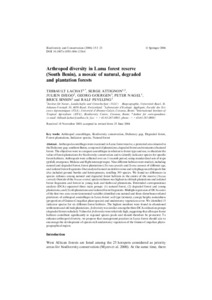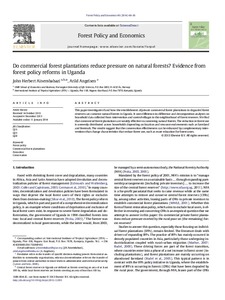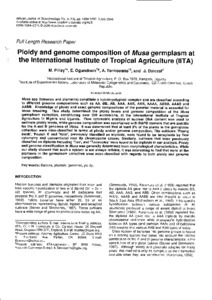| dc.contributor.author | Lachat, T. |
| dc.contributor.author | Attignon, S. |
| dc.contributor.author | Djego, J. |
| dc.contributor.author | Goergen, Georg E. |
| dc.contributor.author | Nagel, P. |
| dc.contributor.author | Sinsin, B. |
| dc.contributor.author | Peveling, R. |
| dc.date.accessioned | 2019-12-04T11:18:32Z |
| dc.date.available | 2019-12-04T11:18:32Z |
| dc.date.issued | 2006 |
| dc.identifier.citation | Lachat, T., Attignon, S., Djego, J., Goergen, G., Nagel, P., Sinsin, B. & Peveling, R. (2006). Arthropod diversity in Lama forest reserve (South Benin), a mosaic of natural, degraded and plantation forests. Biodiversity and Conservation, 15(1), 3-23. |
| dc.identifier.issn | 0960-3115 |
| dc.identifier.uri | https://hdl.handle.net/20.500.12478/3240 |
| dc.description.abstract | Arthropod assemblages were examined in Lama forest reserve, a protected area situated in the Dahomey gap, southern Benin, composed of plantations, degraded forest and remnants of natural forest. The objectives were to compare assemblages in relation to forest type and use, to elucidate the value of forest plantations for biodiversity conservation and to identify indicator species for specific forest habitats. Arthropods were collected over an 11-month period, using standardized sets of traps (pitfall, emergence, Malaise and flight intercept traps). Nine different habitats were studied, including natural and degraded forest, forest plantations (Tectona grandis and Senna siamea) of different age, and isolated forest fragments. Our analysis focused on detritivorous and xylophagous arthropods but also included ground beetles and heteropterans, totalling 393 species. We found no differences in species richness among natural and degraded forest habitats in the centre of the reserve (Noyau central). Outside of the Noyau central, species richness was highest in old teak plantations and isolated forest fragments and lowest in young teak and fuelwood plantations. Detrended correspondence analysis (DCA) separated three main groups: (1) natural forest, (2) degraded forest and young plantations, and (3) old plantations and isolated forest fragments. Multiple regression of DCA scores of the first two axes on environmental variables identified one natural and three disturbance-related predictors of arthropod assemblages in Lama forest: soil type (texture), canopy height, naturalness (proportion of Guineo-Congolian plant species) and understorey vegetation cover. We identified 15 indicator species for six different forest habitats. The highest numbers were found in abandoned settlements and old teak plantations. β-diversity was similar among the three DCA ordination groups (degraded forest excluded). Values for β-diversity were relatively high, suggesting that all major forest habitats contribute significantly to regional species pools and should therefore be protected. To enhance arthropod diversity, we propose that management practices in Lama forest should aim to encourage the development of species-rich understorey vegetation of the Guineo-Congolian phytogeographical region. |
| dc.description.sponsorship | Swiss National Science Foundation |
| dc.description.sponsorship | Swiss Agency for Development and Cooperation |
| dc.language.iso | en |
| dc.subject | Arthropod Assemblages |
| dc.subject | Biodiversity Conservation |
| dc.subject | Dahomey Gap |
| dc.subject | Degraded Forest |
| dc.subject | Forest Plantations |
| dc.subject | Indicator Species |
| dc.subject | Natural Forest |
| dc.title | Arthropod diversity in Lama forest reserve (South Benin), a mosaic of natural, degraded and plantation forests |
| dc.type | Journal Article |
| dc.description.version | Peer Review |
| cg.contributor.affiliation | Universität Basel |
| cg.contributor.affiliation | Université d'Abomey Calavi |
| cg.contributor.affiliation | International Institute of Tropical Agriculture |
| cg.coverage.region | Africa |
| cg.coverage.region | West Africa |
| cg.coverage.country | Benin |
| cg.isijournal | ISI Journal |
| cg.authorship.types | CGIAR and developing country institute |
| cg.iitasubject | Forestry |
| cg.iitasubject | Biodiversity |
| cg.accessibilitystatus | Limited Access |
| local.dspaceid | 94914 |
| cg.identifier.doi | http://dx.doi.org/10.1007/s10531-004-1234-6 |




